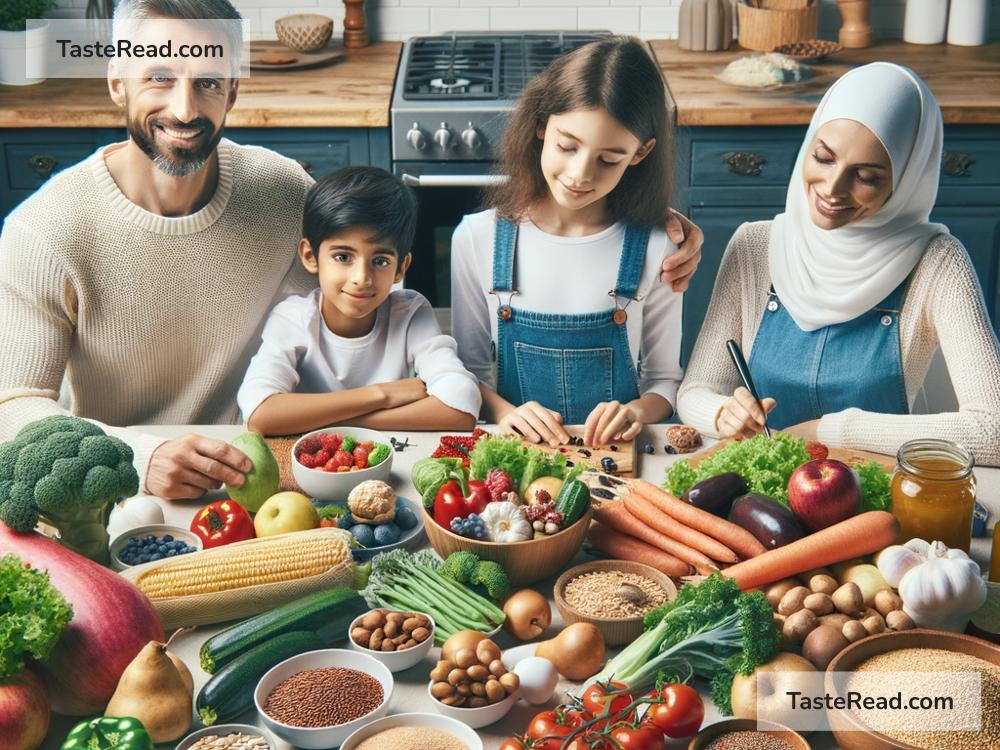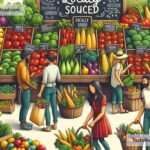The Impact of Food Supply on Nutrition
Food plays a vital role in keeping us healthy and strong. But have you ever wondered how the availability of food affects the nutrition we get? Food supply isn’t just about how much food is available—it’s also about the quality, variety, and accessibility of that food. In this blog, we’ll explore how the food supply influences nutrition, the problems linked to poor food availability, and what can be done to improve it.
The Food Supply and Nutrition Connection
Food supply refers to the availability of food in a community, region, or country. It includes how food is grown, distributed, transported, and sold. Nutrition, on the other hand, is about the vitamins, minerals, and nutrients we get from food to keep our bodies functioning well. These two concepts are closely connected. Without good food supply, it’s hard for people to get proper nutrition.
When food supply is strong and reliable, people have access to fresh fruits, vegetables, proteins, and grains that support a healthy lifestyle. However, when the supply is disrupted—due to factors like droughts, conflicts, or poor infrastructure—malnutrition becomes a major problem. For example, if fresh produce is unavailable in a region for months, people may rely on packaged or processed foods that are high in fats, sugars, and salt but low in essential nutrients.
Challenges in the Modern Food Supply
Unfortunately, the global food supply faces many challenges. These challenges often worsen nutrition problems for millions of people around the world. Here are a few common issues:
1. Climate Change
Climate change is having a big impact on how food is grown. Extreme weather events like droughts, hurricanes, and floods can damage crops or reduce yields. For example, heavy rainfall can destroy rice fields, while prolonged dry seasons can make it harder to grow vegetables. When foods become scarce because of climate conditions, prices go up, making it harder for people to buy healthy options.
2. Economic Inequality
Even when food is available, not everyone can afford it. Economic inequality means that wealthy people may have access to organic foods, diverse diets, and premium quality nutrition, while poorer communities may struggle to afford even basic necessities. This gap creates health imbalances, with low-income populations often consuming cheaper, heavily processed foods that contribute to obesity and illnesses.
3. Urbanization
More and more people are moving to cities, and urban areas sometimes lack access to farms and fresh produce. Many cities rely on imported food, which can be expensive. Additionally, processed and fast foods are widely available in urban environments, often replacing local, nutrient-rich staples.
4. Conflicts and Disasters
Wars, political unrest, and natural disasters can disrupt food systems and prevent food from being delivered to those who need it. In war-torn regions and disaster-stricken areas, malnutrition and starvation become severe problems because the food supply chain is broken.
The Consequences of Poor Food Supply
A poor food supply leads to a range of problems for individuals and communities. The most common consequence is malnutrition. Malnutrition happens when a person doesn’t get enough vitamins, minerals, proteins, or calories. It can lead to health problems like weakened immune systems, stunted growth, and chronic diseases such as diabetes and heart disease.
Children are especially vulnerable to poor nutrition. Lack of proper food during childhood can affect physical and mental development, leading to lifelong health challenges. Adults who don’t eat a balanced diet can also suffer from low energy levels, difficulty concentrating, and more frequent illnesses.
Another consequence of poor food supply is increased hunger and food insecurity. Food insecurity means people don’t know where their next meal will come from. According to the World Food Programme, food insecurity affects millions of people globally. It’s not just about not having enough to eat—it’s also about not having access to nutritious food.
How Can We Improve the Food Supply?
Improving the food supply is an important step toward healthier communities. Here are a few ways governments, organizations, and individuals can help ensure better food availability and nutrition:
1. Support Sustainable Farming
Farmers need resources to grow crops in a sustainable way, even in challenging climates. Governments can invest in technologies like drought-resistant seeds and better irrigation systems. Encouraging farmers to use eco-friendly methods can also protect land and water resources for the future.
2. Promote Local Food Production
Communities can benefit from producing their own food. For example, urban gardens and local farms provide fresh fruits and vegetables and reduce the reliance on imports. Promoting local agriculture makes food more accessible and affordable.
3. Improve Food Distribution Systems
Sometimes, food goes to waste because it can’t be transported to remote areas. Governments, charities, and businesses can work together to improve transportation networks, cold storage facilities, and logistics so food reaches people in need.
4. Educate About Healthy Eating
Teaching people about the importance of a balanced diet can also make a difference. Governments and schools can run awareness campaigns to help communities understand the value of fresh, nutritious foods and how to make healthier choices.
5. Reduce Economic Barriers
Programs that help low-income families access affordable, healthy food can close the nutrition gap. For example, subsidies for fruits and vegetables, free school meal programs, or food banks can make a big impact.
Final Thoughts
The food supply affects more than just the availability of food—it directly impacts the health and well-being of people all over the world. When the food supply is disrupted, nutrition suffers, causing long-lasting effects for individuals, families, and communities. By addressing the challenges in food production, distribution, and affordability, we can create solutions that ensure everyone has access to the nourishment they need.
With a strong, sustainable food supply, we can work toward a healthier world where good nutrition isn’t a privilege but a right for all. Let’s use the power of knowledge, action, and collaboration to make it happen!


